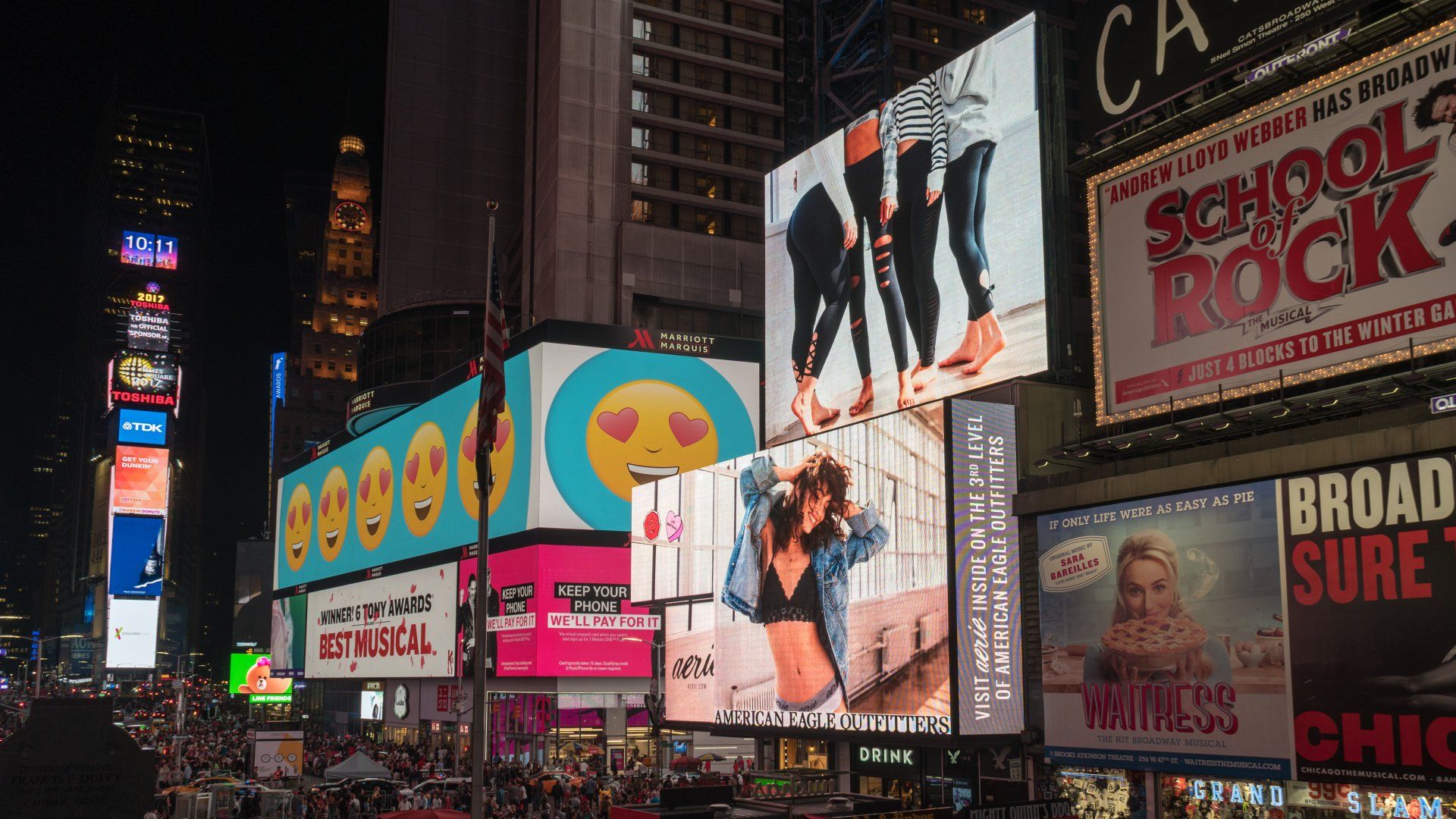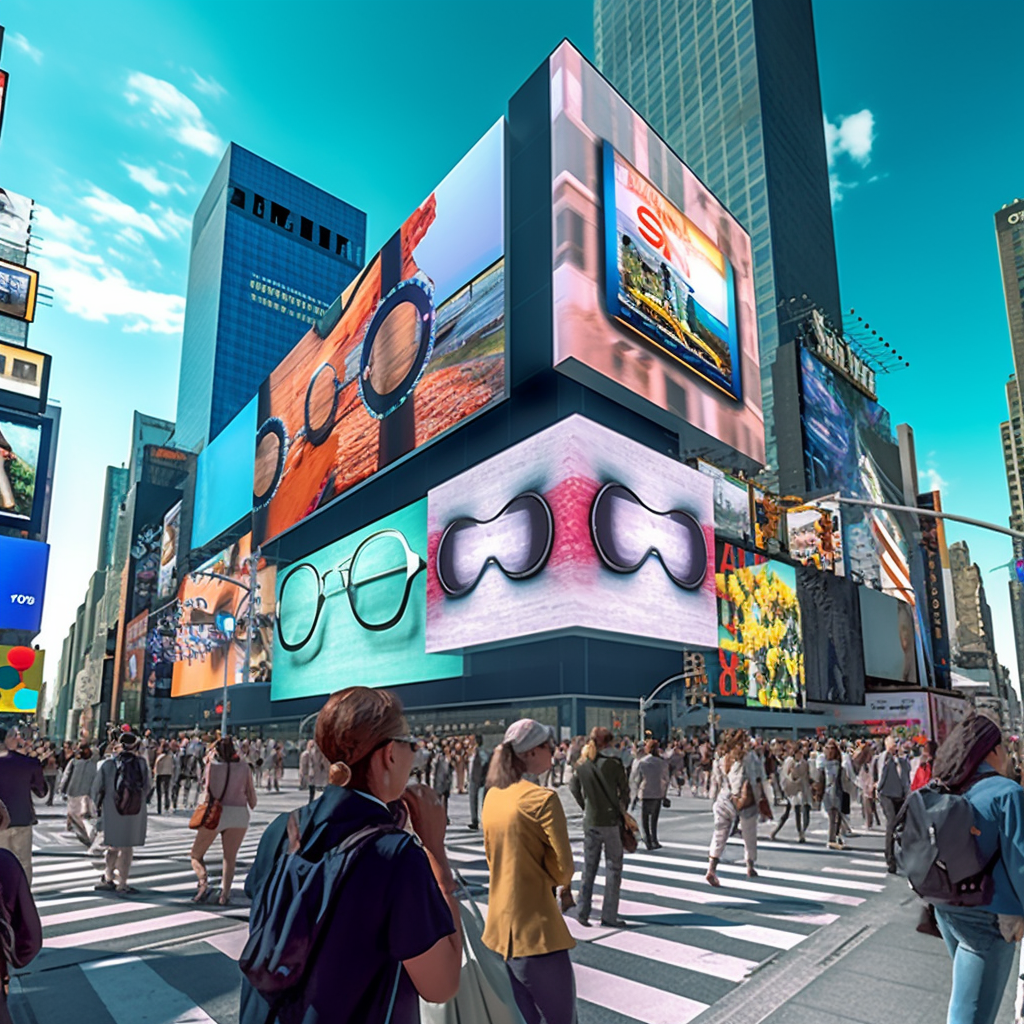Augmented Reality Coming to OOH Ads Near You: Transforming the Advertising Landscape

The advertising world is constantly evolving, and one of the most exciting developments in recent years is integrating augmented reality (AR) into out-of-home (OOH) advertising. As technology advances, AR is poised to revolutionize the way brands engage with consumers, creating immersive and interactive experiences that bring your brand to life in ways previously unimaginable. This article explores how AR transforms OOH ads, its benefits, and how brands can leverage this technology to boost brand awareness and conversion rates.
The Rise of Augmented Reality in Advertising
AR technology overlays digital information onto the physical world, enhancing the viewer's perception and interaction with their environment. This technology has been making waves in various industries, from gaming to education, and now it's significantly impacting advertising, particularly in OOH campaigns.
Bringing Your Billboard to Life
One of the most striking applications of AR in OOH advertising is its ability to transform static billboards into dynamic, engaging experiences. Imagine walking past a traditional billboard that suddenly comes to life with interactive content as you scan it with your smartphone. This captures attention and increases dwell times and engagement metrics, making your ad more memorable and impactful.
Case Study: Burger King's AR Campaign
Burger King has been at the forefront of leveraging AR in its advertising campaigns. In a recent campaign, they used AR to create an immersive experience where users could virtually "burn" competitors' ads using their smartphones, revealing a Burger King ad underneath. This innovative approach garnered significant media attention and drove higher engagement and conversion rates.
The Power of Immersive Experiences
AR creates immersive experiences that resonate deeply with consumers. Unlike traditional ads that people often ignore, AR ads invite interaction, making the audience a part of the narrative. This level of engagement is crucial in today's media-saturated environment, where capturing and retaining consumer attention is more challenging than ever.
Boosting Brand Awareness and Conversion Rates
Integrating AR into OOH ads can significantly boost brand awareness and conversion rates. According to BrandXR, an award-winning XR studio, AR experiences result in 11 times better conversion rates and three times more engagement than traditional website interactions. These stats highlight the potential of AR to not only attract attention but also drive meaningful consumer actions.

Enhancing Traditional OOH with Digital Screens
Digital screens are becoming a common feature in OOH advertising, providing a perfect platform for AR integration. These screens can display dynamic content that changes based on real-time data, creating a more personalized and engaging experience for viewers. When combined with AR, digital screens can offer interactive elements such as QR codes that users can scan to unlock exclusive content or offers.
The Role of QR Codes in AR Campaigns
QR codes are crucial in bridging the physical and digital worlds in AR campaigns. Users can access AR content directly on their smartphones by scanning a QR code on a billboard. This seamless transition from physical to digital enhances the user experience and provides valuable data on user interactions and engagement.
Real-Time Interactivity and Social Media Integration
AR OOH ads are not just static experiences; they can be interactive and shareable, enhancing their reach and impact. Users can engage with AR content in real-time, share their experiences on social media, and even participate in branded challenges or games. This social media integration amplifies the campaign's reach, turning consumers into brand advocates who spread the word to their networks.
Measuring Success: Engagement Metrics and Data Collection
One of the significant advantages of AR in OOH advertising is the ability to measure success through detailed engagement metrics and data collection. Brands can track who interacted with their AR ads, how long they engaged, and what actions they took. This data provides valuable insights into consumer behavior and the campaign's effectiveness, allowing for continuous optimization and improvement.
Overcoming the Challenges
While the potential of AR in OOH advertising is immense, there are challenges to consider. The technology requires a certain level of consumer familiarity and comfort with AR, which is still growing. Creating high-quality AR content can also be resource-intensive, requiring expertise in 3D modeling, animation, and user experience design. However, platforms like BrandXR are making it easier for brands to create, publish, and measure AR experiences without extensive technical skills, bridging the skills gap and making AR accessible to more brands.
The Future of OOH Advertising with AR
The integration of AR into OOH advertising is still in its early stages, but the future looks promising. As technology advances and consumer familiarity with AR grows, we expect to see even more innovative and impactful AR campaigns. Brands that embrace this technology early will have a competitive edge, creating unforgettable brand experiences that resonate with consumers and drive significant results.
Conclusion
Augmented reality is set to transform OOH advertising, offering brands new ways to engage with consumers and create memorable experiences. By bringing billboards to life, boosting engagement and conversion rates, and providing valuable data insights, AR offers a powerful tool for marketers looking to stand out in a crowded advertising landscape. As we move into this new era of advertising, the possibilities for AR in OOH are limitless, and the brands that leverage this technology will lead the way in creating the future of advertising.
TALK TO A PRO
We're here to bring your brand to life!
Stay Connected with BrandXR
Create Augmented Reality for Free!
Create, Publish, and Measure 3D Augmented Reality Experiences Without Having to Code.














